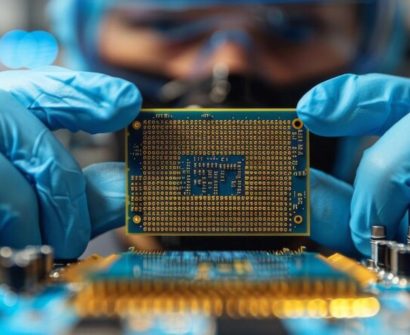
Keyword: VLSI Physical Design course syllabus
Introduction
If you’re preparing for a career in VLSI, understanding what you’ll learn during your training is crucial. A well-structured curriculum ensures you’re not only strong in theory but also industry-ready with tool expertise.
In this blog, let’s explore the VLSI Physical Design course syllabus and the EDA tools you’ll master at SuccessBridge.
Course Structure Overview
The course is structured into 5 progressive modules:
- Basics of VLSI Design
- CMOS fundamentals
- Digital logic design refresher
- Moore’s Law and scaling trends
- RTL to GDSII Flow Overview
- Design abstraction levels
- Design flow from architecture to layout
- Overview of fabrication process
- Physical Design Core Modules
- Floorplanning and placement
- Power planning and IR drop analysis
- Clock Tree Synthesis (CTS)
- Routing and metal layer usage
- Physical verification: DRC, LVS
- Signal Integrity & Crosstalk
- Timing Closure and Sign-off
- Static Timing Analysis (STA)
- Setup/Hold, timing paths, constraints
- Clock skew, jitter, and latency
- ECO (Engineering Change Order) flows
- Project & Industry Readiness
- Real-world chip design projects
- Report preparation and presentation
- Resume workshops and interview prep
Tools You’ll Master
SuccessBridge provides hands-on exposure to industry-used EDA tools:
- Cadence Innovus – For Floorplanning, Placement & Routing
- Synopsys ICC2 – For backend implementation
- PrimeTime – For Static Timing Analysis (STA)
- Mentor Calibre – For DRC/LVS sign-off
- VCS/Verilog – For simulation and logic verification
✅ Students get lab sessions, tool access, and projects similar to what top companies expect.
Certifications & Projects
You’ll complete 2–3 mini projects and a capstone project on:
- Multi-million gate SoC block design
- Power-aware synthesis and timing
- IR drop analysis and congestion mitigation
Certificates are provided after tool-based evaluations and project submission.
Why Curriculum Matters for Placements
Most hiring companies expect hands-on experience in tools, STA concepts, and physical verification. A curriculum that includes both fundamentals and practical flow increases your selection chances significantly.
🎯 SuccessBridge’s students are trained exactly on the skills recruiters look for.
Final Thoughts
When choosing a VLSI course, make sure you get tool training, real-time projects, and updated syllabus. SuccessBridge’s course curriculum ensures you’re fully equipped to take on industry challenges from day one.
📥 Download Course Syllabus or 📞 Talk to a mentor today.






